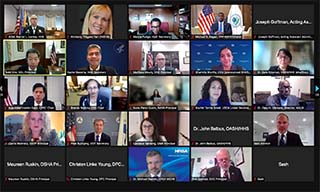Closer to Zero
April 2021

FDA Action Plan for Baby Foods
The U.S. Food and Drug Administration’s (FDA) has released a new initiative, Closer to Zero, that identifies actions the agency will take to reduce exposure to toxic elements in foods eaten by babies and young children to lowest levels possible. FDA has prioritized babies and young children because their smaller body sizes and metabolism make them more vulnerable to the harmful effects of these contaminants.
Previous work of the FDA and stakeholders has led to meaningful reductions in exposure to toxic elements. The FDA’s action plan builds on this progress and outlines a science-based, iterative approach for achieving continual improvements over time.
Further reductions in the levels of toxic elements in foods will be made by:
- Advancing the FDA’s research on and evaluating changes in dietary exposures to toxic elements
- Encouraging adoption of best practices by industry to lower levels of toxic elements in agricultural commodities and products
- Increasing targeted compliance and enforcement activities
- Monitoring progress of levels over time
- Setting action levels, with input from stakeholders
Related Resources:
Task Force Principals Meet
January 2021
On October 28, 2021, the President’s Task Force on Environmental Health Risks and Safety Risks to Children (Task Force) convened a full meeting of the Task Force Principals from across the federal government.
This event brought together cabinet level officials to reinvigorate the federal government’s commitment to protecting children from environmental health and safety risks and promoting action on children’s health.
Leaders from federal agencies including HUD, DOJ, DOT, NOAA, OMB, OSHA, USDA, CPSC and others noted their support for the interagency work of the Task Force. Three Task Force priority areas were highlighted: asthma; lead exposure and safety; and extreme weather events, emergencies, and disasters.
- The priority on children in emergencies and disasters will help to coordinate and enhance federal activities to protect children’s health and safety in the face of such events.
- Building on its interagency asthma work, the group plans to increase uptake of recently updated asthma management guideline for children and to expand support for comprehensive asthma interventions.
- The Task Force continues to make progress protecting children from lead exposures by aligning federal efforts to meet the needs of communities to reduce childhood lead exposures.
Prior to closing the meeting, the Co-chairs reiterated a request that Task Force principals designate or confirm staff to serve on the Task Force steering committee and related subcommittees.
(99KB)

